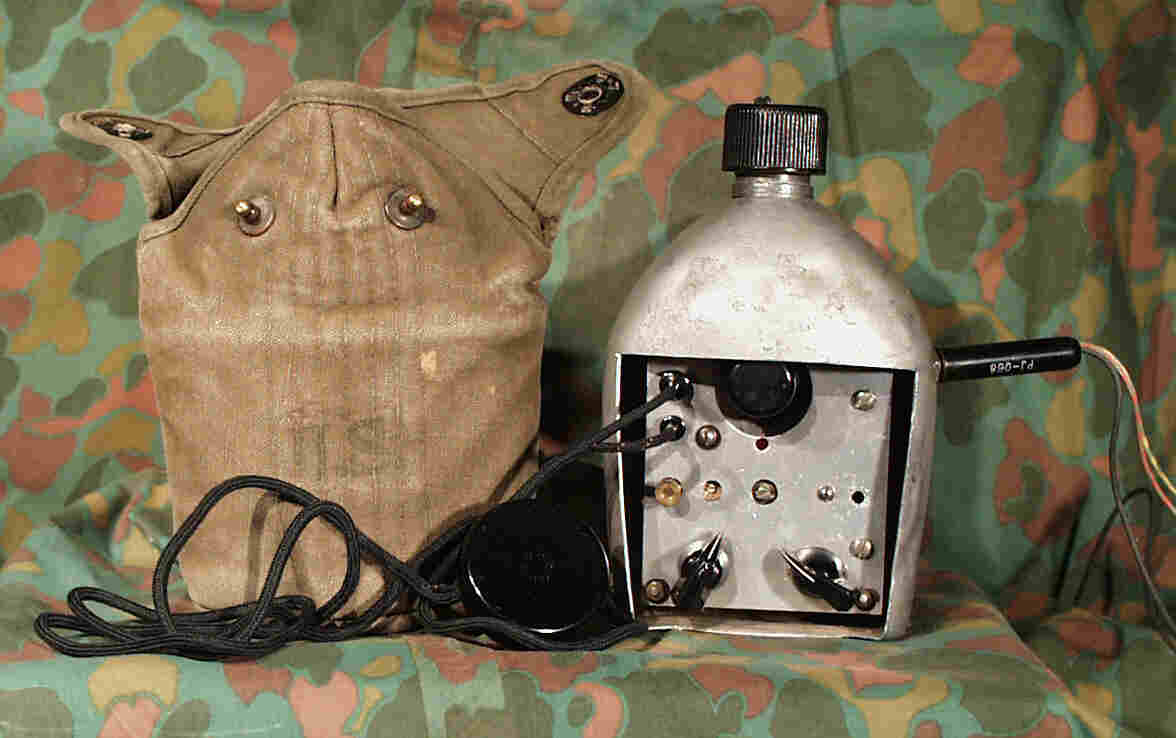WWII Prison Camp
Short-wave Receiver
| These drawings come from United States Army in WWII, The Technical Services, The Signal Corps: The Outcome, U.S. Government Printing Office, 1966. The text follows: |
“Nor was
concealed radio activity by Signal
Corps men in the Philippines confined to the guerrillas.
There was
at least one incident of it in prison, involving a radioman, William D.
Gibson, who had received his commission as a lieutenant in the Signal
Corps
only a few hours before the fall of Corregidor. A former U.S.
“ham” working
in Manila as a civilian radio technician, he had offered his services
to
the Army on Corregidor after the enemy invasion began. But
his commission
had been delayed till the last hours of his freedom because the medical
officers, busily treating wounded men, had not given him the required
physical
examination. Subsequently, a prisoner in the Cabanatuan
concentration
camp, he came into the possession of a 1-tube regenerative radio
receiver
improvised by an officer of the Engineer Corps, Capt. Russell J.
Hutchinson,
who had built it of scrap parts and placed it inside a GI
canteen.
Hutchinson, on being shifted out of the prison, left it with
Gibson.
But the set no longer worked. Its single amplifying tube, a
12SK7,
had burned out. Obtaining a different type of amplifier tube, a 6J7,
stolen
by an American sailor who had a prison job in a Japanese shop, Gibson,
rewired the set to accommodate the tube; a cauterizing iron from the
prison
hospital served as a soldering iron. Looking like any
ordinary canteen,
the radio was kept hanging at the lieutenant's bed. Japanese
inspectors
passed it by, suspecting nothing. Its antenna was a No. 22
wire woven
inconspicuously into a rope clothesline. Only the headphones
had
to be secreted separately. The prisoners furtively operated the
receiver
in the evening, using battery power, which was available in the prison
hospital. The little set brought in radio programs emanating
from
Siagon, Tokyo, and San Francisco. Best of all was the Voice
of Freedom
broadcast from the Apache after the Leyte Campaign
began.
This treasured radio receiver was left behind when the lieutenant,
suddenly
freed with other prisoners departed in the pell-mell of the daring
Cabanatuan
raid, 30 January 1945.
| Here's my reproduction of the radio. I was suprised that the 12SK7 fit across the narrow dimension of the canteen. I used a straight-forward regen circuit with a tapped coil and antenna coupling via a trimmer cap. It tunes about 5 to 12 MHz. A circuit of this sort will work with as little as 12 volts on the plate. The standard canteen cup covers the opening when it's in the cover. When you pick it up it just feels like a canteen. |  |